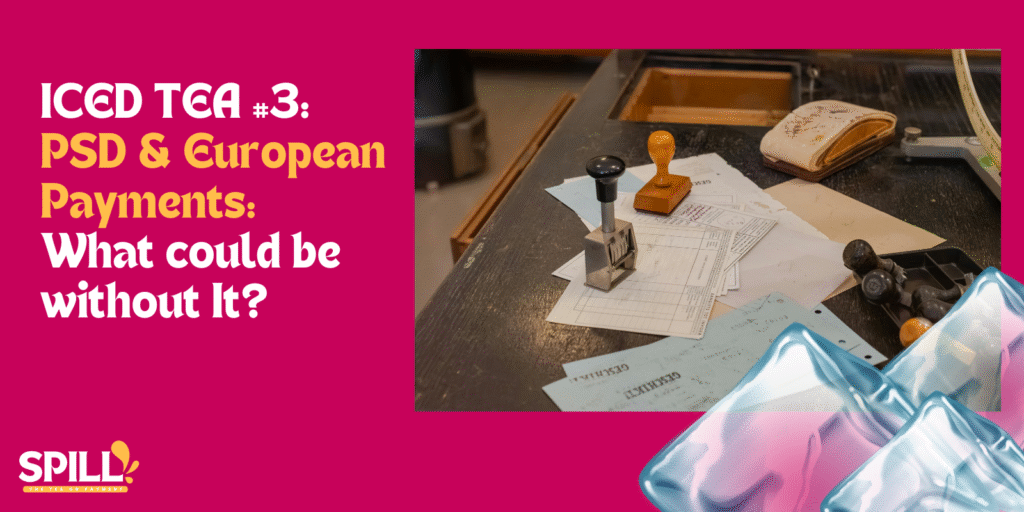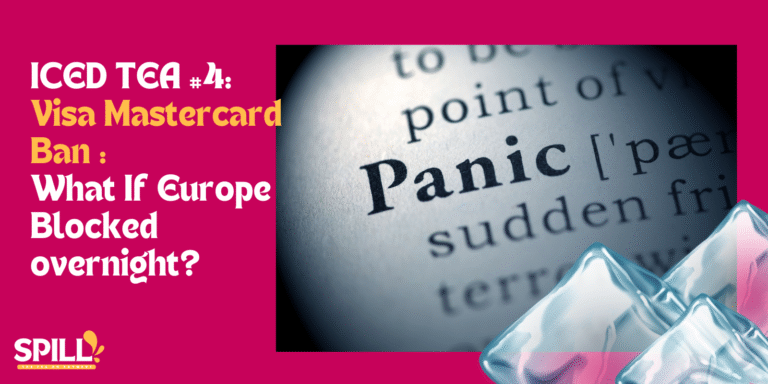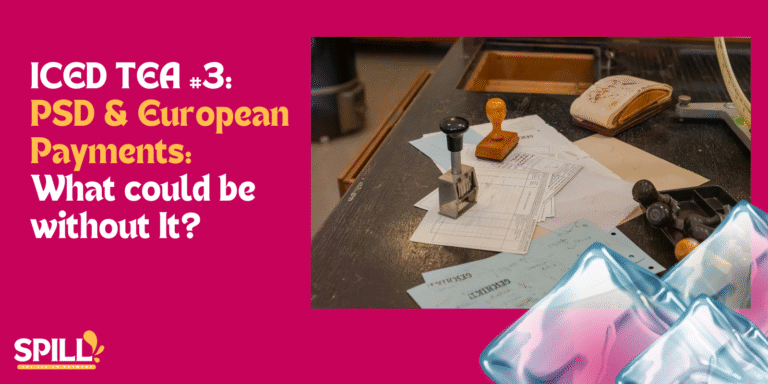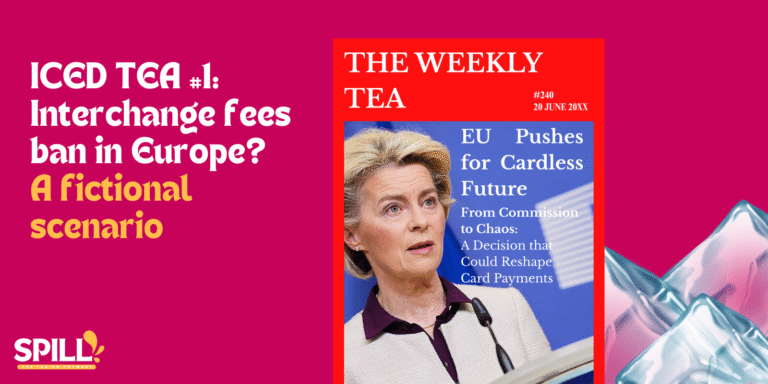In 2007, the European Union introduced the Payment Services Directive (PSD1), a legislative framework that would later become the bedrock of European retail payments. At that time, it was visionary, bold, and unusually proactive. Europe was still building a unified market for financial services. Payments were naturally implied. Behind the PSD was also the idea that the European continent needed to move from older structures, embrace digital payments, and digitise its economic exchanges to be more efficient.
But what if it had never happened?
What if PSD for European Payments never existed? Would Fintech still have taken off?
This post is not here to negate the impact of PSD on European Payments, but to interrogate the logic behind it and its long-term consequences.
A Directive Without a Market
The first thing to understand is this: PSD didn’t regulate a vibrant cross-border market. It created one from scratch.
In the early 2000s, the EU had a single currency, but not a single payments market. National licensing regimes, inconsistent consumer protection laws, and non-interoperable infrastructures were the norm. Cross-border payments were expensive and slow. Fintech as we know it barely existed. Regulators were concerned about the potential for fraud to explode due to the rise of e-commerce, as well as the acute increase in money laundering in Europe, if businesses were to start operating without a framework.
PSD version 1 was not a response to market demand; it was a design act for European Payments. A harmonised legal framework was imposed to stimulate a market that didn’t yet exist. The European institutions did a bet. They set the conditions for competition and integration before there was evidence that such a market would emerge organically. A proof of that is that there were no retail payment strategies in Europe, as well as centralised data from the ECB to evaluate the need. Those tools came after the directive was adopted.
The logic was liberal: open access, common rules, single licenses, free movement, competition logic. A textbook single-market vision. And it worked, on the surface.
What PSD Enabled
The PSD framework opened the gates to a wave of payment legal innovation:
- The legal recognition of “Payment Institutions” (PIs) and, later, “Electronic Money Institutions” (EMIs)
- A single license that could be passported across the EU/EEA
- Legal certainty for SEPA execution deadlines
- Standardised consumer protections, including refund rights
- The eventual introduction of Open Banking under PSD2
- A clear framework to secure transactions with SCA (Strong Customer Authentication)
In that sense, PSD was the scaffolding in European Payments that let companies like Adyen, Wise, Revolut, and hundreds of others scale quickly in a unified regulatory environment. It created predictability for fintechs and attempted to establish a competitive regime with banks that were accused of being too slow to innovate. Instead of choosing an incentive, we decided to sanction banks and question their raison d’être.
But by setting the rules so early, PSD also constrained what European payments could become.
What PSD Constrained
PSD’s Straightjacket
By setting the rules so early, PSD locked European payments into a rigid framework. Licensing categories left no space for legal grey zones where creativity could thrive. Regional alliances that might have emerged between large economies like France and Germany were cut short by the need to defer to Brussels. And when smaller states like Lithuania and Ireland opened the floodgates with fast-track licenses, bigger markets were legally obliged to accept them. A textbook case of regulatory arbitrage.
Efficiency at the Cost of Energy
Europe succeeded in making payments smooth and seamless, but at a price. By removing friction, it also eliminated diversity. Where the US allowed chaos and let ecosystems grow through trial and error, Europe opted for order. The result was stability but also sterility. Without sandboxes or pilot zones like those in Switzerland or Singapore, ideas never got the chance to stumble, adapt, and evolve.
Platforms Shut Out
The PSD framework imposed strict limitations on marketplaces and platform-driven payment models. It required full regulatory compliance even for intermediary or pass-through payments. While this might have increased consumer protection on paper, it also discouraged the development of multi-sided platforms within the EU. Ironically, these same rules created an opening for non-European players, notably Chinese super-apps and platforms, to enter the European market through local partnerships or exemptions. They did not have to comply with the same burdens. Europe regulated its models to death, and in doing so, outsourced innovation to players who never had to play by the same rulebook.
The Adyen Example
Adyen is often celebrated as a European great payments success, and they can thank PSD. But without it, it’s unlikely it could have reached its current scale. But also, did it create a winner-takes-it-all logic? Creating a logic of industry concentration, where competitors being threatened started to acquire companies without clear plans on how to articulate, namely, Worldline or Nexi.
In a sense, Adyen and its competitors reinforced the preponderant role of American card networks, without playing a lot the sovereign game.
Adyen used the full power of the European legal stack:
- One Dutch license, passported across the continent, easy to get
- Direct access to SEPA and card schemes via centralised permissions
- Standardised rules across acquiring and issuing with a one-stack product
Without PSD, Adyen would have had to acquire licenses in each country. Navigate 27 legal systems. Establish local banking relationships individually. It might have still succeeded, but not as the seamless, unified platform we know today. Potentially, they could have stayed a big e-commerce Benelux acquirer.
The UK’s Strategic Embrace of PSD
It’s worth remembering that while the UK may not have drafted PSD1, it embraced and executed it faster than almost any other member state. The liberal regulatory logic (open access, licensing for non-banks, passporting) aligned perfectly with the UK’s ambition to remain Europe’s financial centre.
By April 2009, the Financial Services Authority (FSA) had already published its supervisory framework. By May, firms could apply for licenses, a full seven months ahead of the EU’s 1 November deadline. France and Germany transposed the directive later that summer. Italy followed closer to the deadline. But the UK made sure it was first to open the gate.
It wasn’t just early, it was intentional. London positioned itself as the home of fintech-ready regulation, and PSD gave it the tools to attract a new wave of financial innovation. By the time Brexit happened, the UK had over 150 licensed payment and e-money institutions, one of the highest counts in Europe.
And then came the irony. The UK left the EU but kept the framework.
Post-Brexit, Britain continues to operate under a regime almost identical to PSD2. It hasn’t reformed or replaced the model it once championed. Because the truth is: the regulation may have been European, but the opportunity it unlocked was British.
London set the tone. Leaders always do. And in payments, PSD was part of the UK’s blueprint for staying ahead, until it walked away.
A Directive Made by Western Europe and for It
But London wasn’t alone in benefiting. From the very beginning, PSD was a Western European-led project.
Germany, France, the Netherlands, Spain, and the UK shaped and executed the directive quickly and decisively. These countries became the core of Europe’s new payment infrastructure and home to most of the licenses.
Meanwhile, newer EU entrants (particularly in the Balkans and Central & Eastern Europe) saw far less traction. Countries like Bulgaria (40 PSPs), Croatia (36), Estonia (32), and Hungary (66) remained on the periphery of the ecosystem.
Lithuania became an outlier, not by design, but by leveraging PSD’s loopholes: offering fast-track licenses, minimum scrutiny, and low entry barriers. They used a regulatory arbitrage strategy, not a product of equal access.
In theory, PSD harmonised the market, but in practice, it consolidated Western European dominance, enabling fintech capitals like London, Amsterdam, and Berlin to scale faster, attract capital, and set the tone.
PSD created a single market, but it didn’t create a balanced one. Funny enough, the directive did not think that the centre of gravity of Europe would move from West to East with the unfolding of Ukrainian events and the increasing influence of Poland in the overall decision-making process of Europe.
A Different Europe of Payments?
What if the chaos had been a feature, not a bug?
Without PSD, maybe Europe wouldn’t have scaled as fast, but maybe it would have dared more. They would have built weirder models, formed unexpected alliances, let countries like France and Germany set standards through mutual trust, not legal harmonisation. And most importantly, they would have let mistakes happen and then built stronger systems from them.
We might have ended up with fewer unicorns but also fewer clones. Instead of dozens of lookalike neobanks and wallets, we might have seen diverse regional champions emerge. Payments wouldn’t be a clean grid of licensing and passporting; it would be a layered patchwork of ambition, risk, and identity.
A less efficient Europe? Probably. A less interesting one? Not so sure.
Final Thoughts
I struggled a lot to imagine a Europe without PSD, it was a pain for me to think outside of this rigid but safe box.
PSD was a choice, one made in Brussels, shaped by British liberalism and Franco-German pragmatism. It was a preemptive bet on harmonisation, stability, and control. But in 2009, with a way different world from that it is now.
And yet, recent events, from war in Ukraine to Trump’s economic nationalism, show that fragmentation never really went away. It just changed forms. In fact, in today’s volatile environment, the illusion of unity might be more dangerous than visible disagreement. When markets are messy, the rules are harder to game. When everything looks predictable, it only takes one rupture to break the system.
So yes, PSD made things cleaner. But maybe too clean, too soon. We may have missed this whole step of crazy creativity before ruling out.
Because rules don’t just govern innovation, they govern imagination. And imagination thrives in friction
🧃 This was Iced Tea, a fictional chill for a hot summer.
One idea. Many consequences. No easy answers.
You can read the previous episodes on the Interchange ban & European Public Payments Infrastructure. Here & Here
See you next week for the last big glass.










